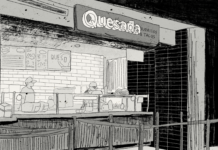A new and inexpensive way to convert CO2 into liquid fuel has been discovered by a researcher at UW.
It is called an “artificial leaf”, made of cuprous oxide, containing two inexpensive elements: copper and oxygen.
When sunlight, CO2 and H2O are input to artificial leaf, it will produce methanol and oxygen as products.
It is an hour-long chemical reaction that is key to turn carbon dioxide into fuel.
CO2 is a greenhouse gas for climate change and global warming.
This technology is expected to reduce CO2 emission from oil companies, automobile companies and steel companies.
It can also provide clean and sustainable fuels, methanol, for vehicles and aircrafts.
“I was inspired by the natural leaf which can directly convert CO2 and H2O to glucose using sunlight. I try to mimic this natural process to convert CO2 and H2O to fuels using sunlight without any electricity,” said Yimin Wu, an assistant professor in Mechanical and Mechatronics Engineering at UW, who led the research. “A leaf produces glucose and oxygen. We produce methanol and oxygen.”
The artificial leaf can be used at a lab scale right now, but Wu expects it to scale it up with industry partners including oil, steel and automotive companies.
The research will be carried forward to increase the methanol yield and to help commercialization of the process.
“I’m extremely excited about the potential of this discovery to change the game,” Wu said. “Climate change is an urgent problem and we can help reduce CO2 emissions while also creating an alternative fuel.”
Wu collaborated on the paper with other researchers at the Argonne National Laboratory in Illinois, as well as scientists at California State University, Northridge, and the City University of Hong Kong.
“This has several advantages: one is we convert solar energy directly into fuels without using electricity as an intermediate step, which prevents losing some energy,” Wu said. “The other advantage to using sunlight is that it doesn’t need complicated infrastructure and can be more easy to scale it up than using electricity.”
Wu worked on this method for about three years.
Similar reseach in this area have been inititated. NASA developed a tehnology to covert CO2 to fuel using a thin metal oxide film and sunlight.
Australian scientists discovered a way to convert CO2 into solid carbon at room temperature by using a metal alloy as catalyst.
The study was published in the journal Nature Energy and can be found on https://www.nature.com/articles/s41560-019-0490-3.































